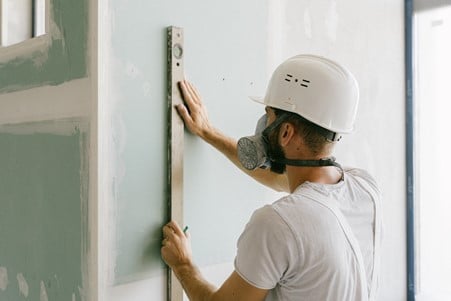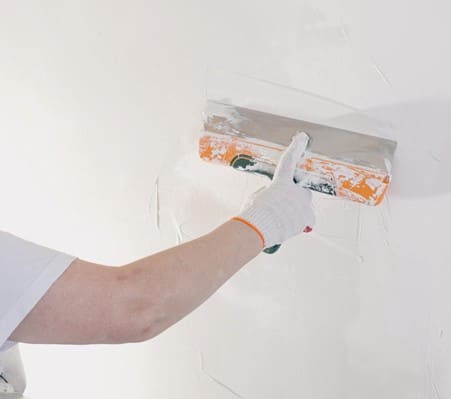If you’re building a new home, adding an extension to an older home, or performing an extensive remodeling project chances are you be faced with the decision of what material should I used to line the interior walls.
Two of the most common types of building materials used to line interior walls are plasterboard and solid plaster, also known as simple plaster. Though similar these two different materials have their distinct advantages and disadvantages.
We’ve listed some of the differences between solid plaster and plasterboard so you can decide which one is suitable for you and your home.
Installation
Plasterboard installation can be completed in 2-3 days. The panel sheets are cut to size to fit the space they’re intended for which also includes cutting holes for outlets or light switches. Then the sheets are fastened to the wall frame using nails or screws. Once the panels have been secured the joints will need mudding, taping, and sanding to achieve a smooth continuous wall or ceiling surface.
Solid plastering involves hand troweling the plaster mixture directly onto the walls, smoothening the surface out, and allowing the plaster mixture to dry. Once dry, another subsequent coat is applied. Typically, 2-3 coats of plaster are applied. While the plaster method could take about 2-3 days to finish a standard room. The drying process can take up to 2 weeks or more depending on the type of plaster used, how many layers were applied, ambient temperature, and moisture levels within the room.
Labor cost
Plasterboard installation is generally much more affordable compared to solid plastering because it is far less time-consuming in addition to being much easier to do. Typically, plasterboard installation costs between $1-3 per square foot for materials and labor. The exact cost of installation will depend on the type of products used, the size of the job, the complexity of the job, finish quality of the job among other variables
Solid plastering requires a more skilled application which is why it is more expensive. On average it cost $5 per square foot for materials and labor. Similar to plasterboard installation, the cost can differ depending on the type of job you require.
Outcome
When correctly installed plasterboard walls will provide a straight, flat, and smooth wall. When the seams have been taped, mudded, and sanded by a professional plasterer, like the team at plasterer Townsville, the transition from one sheet of plasterboard to the next will be undetectable once painted.
Solid plaster is generally considered a higher-end product due to the fact that there are no gaps or joints since the plaster mixture is applied evenly across the whole surface. Additionally, the malleable nature of plaster means it is the choice material for curved walls and ceilings. Finally, because solid plaster walls are more durable, in particular, impact-resistant compared to plasterboard, you don’t have to worry about accidentally bumping walls when moving furniture around.
Damage repair
Damage to the plasterboard requires inspection and preparation before embarking on the plasterboard repair process. This includes checking if the damage has permeated through the sheet or just the exterior layer. If the damage is through the sheet and extends to the wall studs, you may need to cut out a patch to cover it. There are patch kits available that you could purchase if you wanted to try and do it DIY. Sometimes the damage can weaken the rest of the plasterboard sheet, in which case you may need to remove and replace the entire sheet. Once damaged sections of sheets have been replaced, you will need to apply a joint compound to cover the seams and smoothen the surface.
Damage repair on plaster walls is less labor-intensive than fixing plasterboard. For example, if there are cracks on a plaster wall, it can be fixed quite easily. You can scrape away any loose plaster and then apply a joint compound to cover the damaged area. Then sand the area to smoothen it prior to adding touch-up paint.
When choosing between plaster and plasterboard you need to consider the above factors before arriving at a decision. Both of them have their advantages and disadvantages. It is up to you to prioritize which aspects are more important for you and your home. Armed with a better understanding of the differences you can feel confident in your choice whichever way you decide to go.

